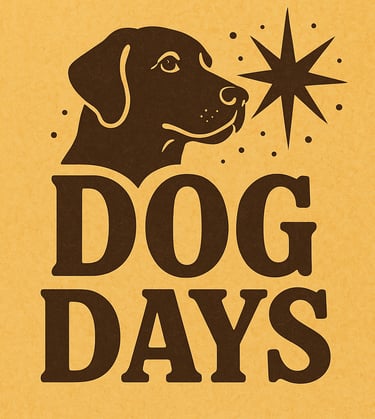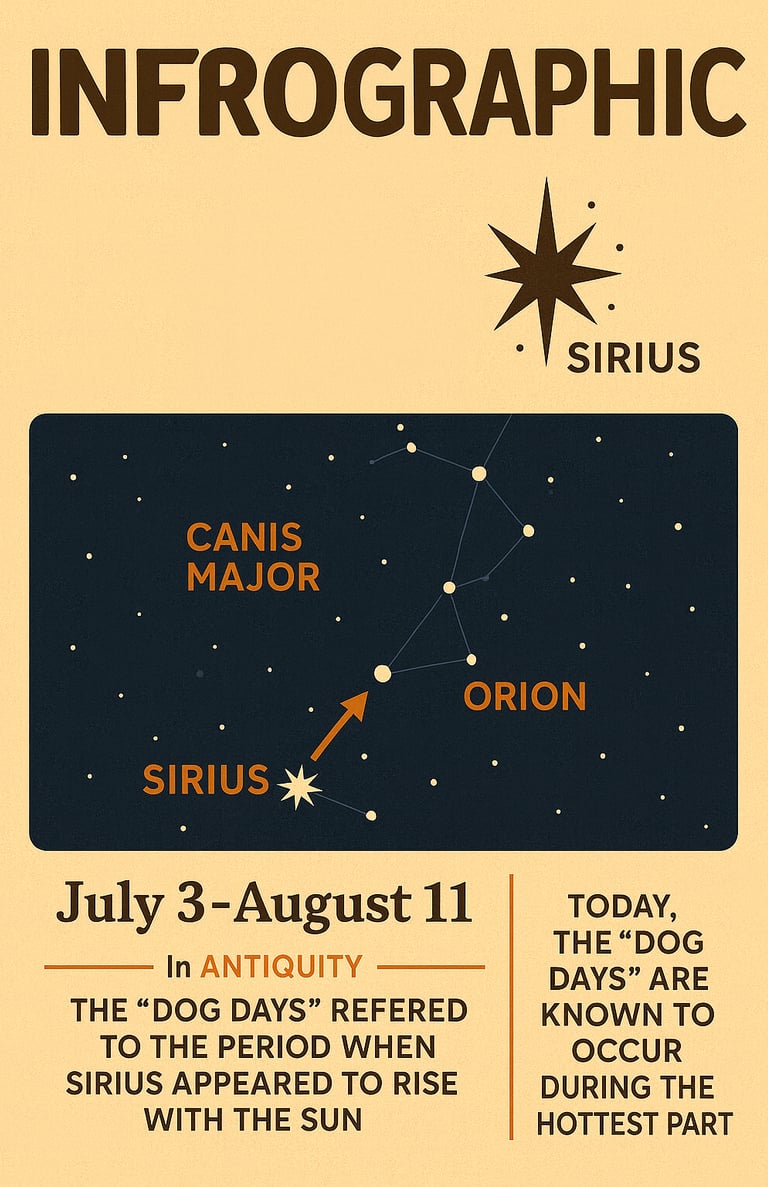When the searing heat of late July and early August sets in, people often talk about the “dog days of summer.” At first, the name might conjure up images of overheated canines sprawled out in the shade, tongues lolling in the hot air. But the phrase has nothing to do with our four-legged friends on Earth — it’s actually rooted in the stars above.
The term traces back to ancient astronomy and one star in particular: Sirius, the brightest star in the night sky. Known as the “dog star,” Sirius marks the “eye” of the constellation Canis Major, Latin for “Greater Dog.” In Greek mythology, Canis Major was the faithful hunting dog of Orion, the legendary huntsman. The story aligns beautifully with the sky’s layout — the three bright stars of Orion’s Belt form a celestial arrow that points directly toward Sirius in the southern sky.
The Phrase “Dog Days of Summer” Comes From The Name of The Star Sirius
Interesting Facts


For the ancient Greeks and Romans, the “dog days” referred to a specific time of year — July 3 through August 11 — when Sirius rose in the east just before or alongside the sun. They believed the combined heat of the sun and Sirius was responsible for summer’s scorching temperatures. This seemed reasonable in an age before modern science, as Sirius’s dazzling brightness made it appear almost sun-like in intensity.
Of course, we now know this idea doesn’t hold up. Sirius is about 8.6 light-years away — roughly 50 trillion miles farther from Earth than the sun — and has no measurable effect on our climate. The star’s brilliance comes from its intrinsic luminosity and proximity compared to other stars, but in terms of heat, it’s irrelevant to Earth.
The name “dog days” has persisted through millennia, even though its original astronomical connection is now mostly forgotten. Interestingly, the exact timing of the “dog days” depends on your location on Earth and the slow wobble in our planet’s rotation (a phenomenon called axial precession). In about 13,000 years, Sirius will rise alongside the sun not in summer, but in midwinter — turning the seasonal association completely on its head.
So, while the phrase may sound like a quaint nod to lazy summer afternoons, it’s actually a remnant of 2,500-year-old sky-watching traditions, linking the sweltering stretch of summer to the cosmic companionship of the “dog star” and its mythical master, Orion.


Numbers Don't Lie
Years until Vega surpasses Sirius as the brightest star in the night sky: 210,000
How many times brighter Sirius is compared to our sun: 25.4
Distance (in light-years) Sirius is from Earth: 8.6
Year Sirius Satellite Radio launched (now called Sirius XM): 2002
Transforming small business consulting with dynamic energy.
Service
Trust
(312) 220-9200
© 2025. All rights reserved.


141 W. Jackson Blvd. | Suite 1502 | Chicago, IL | 60604






